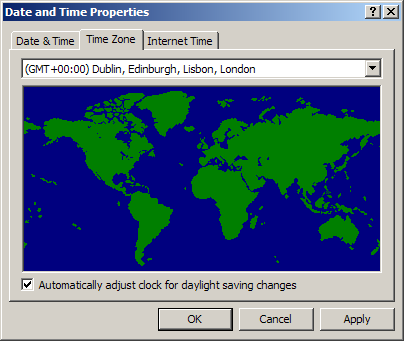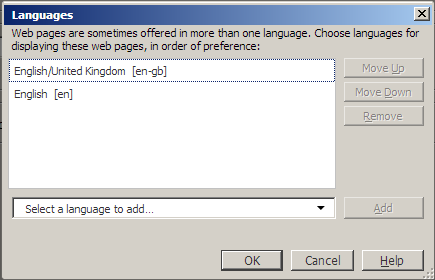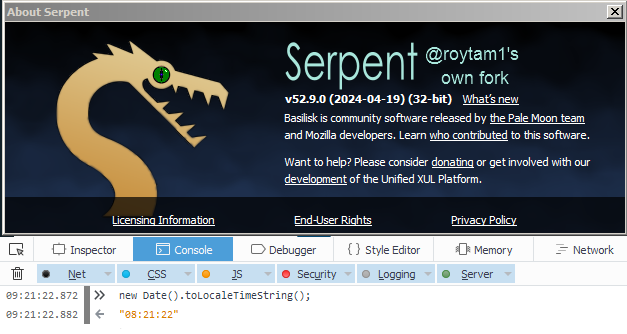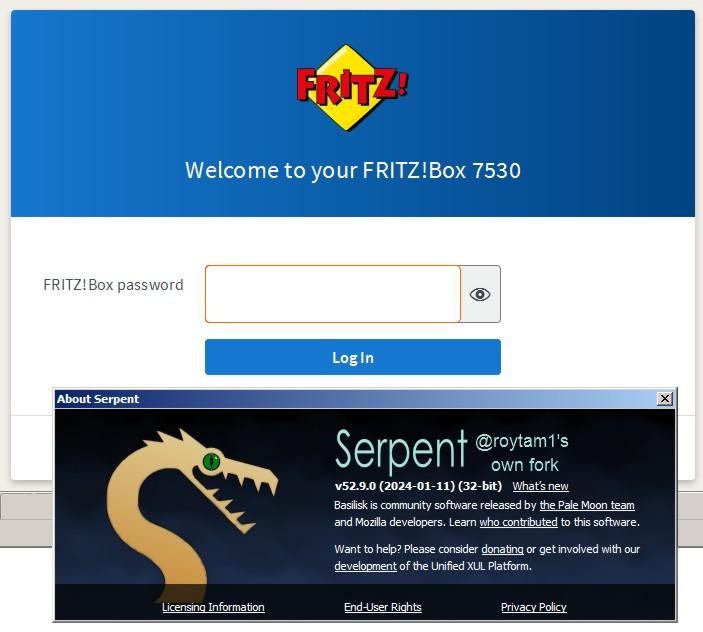
Ben Markson
MemberContent Type
Profiles
Forums
Events
Everything posted by Ben Markson
-
My Browser Builds (Part 5)
Ben Markson replied to roytam1's topic in Browsers working on Older NT-Family OSes
The 153 error relates to the referrer header – Google have decided that when embedding a video you can't block it any more. It's worth noting that when these useless error codes appear that you can right-click ... copy debug info ... paste that info somewhere you can read it, and then look towards the bottom for: "debug_error" The 153 error will reveal itself as: "embedder.identity.missing.referrer" which is the clue that it is caused by a missing referrer header. Ben. -
Instead of View Wireless Networks... Connect, you can use the Add button under the list of Preferred networks on the Wireless Networks Connection Properties. That route gives you a lot more options to play with. Also, while the link is working (using your RealTek install disc) you should be able to view and make a note of the connection properties which you may then be able to apply manually. Ben.
-
I have a Phillips SNB5600 Wireless USB Adapter. It's nothing special. I don't think I have ever 'installed' it as such. When I plug it in it appears in Network Connections with Status: Not Connected. Before I can do anything useful I have to start the Wireless Zero Configuration service. NET START WZCSVC Now when I right-click the Wireless Network Connection entry in Network Connections... View Available Wireless Networks. I see a list of any nearby wireless networks. What happens next depends on what you're trying to do. Ben.
-
My Browser Builds (Part 5)
Ben Markson replied to roytam1's topic in Browsers working on Older NT-Family OSes
Okay, I'm way down a very strange rabbit hole now. I use an ancient copy of AdBlock Plus (v2.9.1). Using the latest Serpent, if I go to to https://forums.digitalspy.com with this filter active: ||fonts.googleapis.com^ it crashes. Inactive it doesn't crash. The older Serpent is unaffected. Ben. -
My Browser Builds (Part 5)
Ben Markson replied to roytam1's topic in Browsers working on Older NT-Family OSes
I've given up and gone back to basilisk52-g4.8.win32-git-20250712-3219d2d-uxp-b9ebe5b259-xpmod.7z I've now encountered an insta-crash visiting https://forums.digitalspy.com so I'm thinking something's just not right. Ben. -
My Browser Builds (Part 5)
Ben Markson replied to roytam1's topic in Browsers working on Older NT-Family OSes
Nice idea... :where is working fine, so it's not that. My gut says that hidden="" makes no sense and that it should be hidden="true" but everything is so javascript driven and dynamic that it's hard to tell if what the inspector shows is reliable. Ben. -
My Browser Builds (Part 5)
Ben Markson replied to roytam1's topic in Browsers working on Older NT-Family OSes
I'm observing this for a FRITZ!Box 7530 running FRITZ!OS: 8.02 – which is insanely difficult to debug as it comprises screens that are constantly being rendered using javascript in real time. I'm not sure how to properly explain this but here goes... using Serpent v52.9.0 (2025-07-09) (32-bit) this works: <article class="page-blocks"> <div class="page-blocks__block" :hide="isMeshClient || isIpClient" hidden=""> <----- <div class="text-block"> <div class="text-block__container"> <p :show="hwf.isBox"> The table shows all of the network devices connected with the FRITZ!Box via LAN or Wi-Fi, as well as VPN connections to the home network that were established by FRITZ!Box users and apps (such as MyFRITZ!App, FRITZ!VPN). All of the devices in the home network are connected in a computer network and can exchange data, images, music, and videos with each other. Network devices in the home network can also be reached from the internet through port sharing.</p> </div> </div> </div> : </article> -----> :where([hidden], [print-only]) { display: none !important; } After (2025-07-09) the display: none is not being applied. This causes page areas to be shown that should be hidden. As this is all javascript driven it's very difficult to assign a specific cause to any effect. Obviously, it's not the display: none itself but maybe something to do with the :where() pseudo-class? Or is it the :hide="isMeshClient || isIpClient" hidden="" stuff? Or <article>? As Serpent's inspector doesn't seem to like javascript driven html and only displays the initial state of the web page, I've gained this much insight using an up-to-date version of Firefox, this means I can only inspect the display: none being applied when it's working. There are no errors being logged. Would anyone like to hazard an explanation. Ben. -
My Browser Builds (Part 5)
Ben Markson replied to roytam1's topic in Browsers working on Older NT-Family OSes
I have a lot more run-ins with Cloudflare than I do Anubis. Both of them can get stuck in an infinite validation loop. Cloudflare can get insanely aggressive, it will quite happily lock your browser into an irretrievable Loop of Death (who would write code like that?). At least Anubis can easily be stopped. I think the thing I object to the most is that they focus on the way a browser looks rather than what it is actually doing. In civil society this is characterised as profiling rather than being intelligence led. All that will happen is that the bots will better disguise themselves and their behaviour will go unchecked. Ben. -
My Browser Builds (Part 5)
Ben Markson replied to roytam1's topic in Browsers working on Older NT-Family OSes
It's Cloudflare, Jim, but not as we know it. Anubis is another clunky piece of software developed by people who believe that only selected browsers are allowed to use the internet. It seems to be predicated on the idea that any non-conformant browser must be evil. Ironically, https://forums.mozillazine.org/ are using the exact same thing. Ben. -
My Browser Builds (Part 5)
Ben Markson replied to roytam1's topic in Browsers working on Older NT-Family OSes
If I go anywhere near this website ... instant crash. https://www.theweatheroutlook.com Same happens in safe mode. Ben. -
Thanks for the links. I'm afraid my choices are mainly down to a lack of skill. Creating a VM for XP wasn't my first objective. I wanted an OS that when necessity demands can run a truly up to date browser. I'm not a particular fan of Linux (I find its UI both incomplete and inconsistent) but I hate the newer incarnations of Windows. I think Linux Mint is probably the path of least resistance. It runs the latest Firefox browser. It also runs legacy browsers such as Basilisk and Firefox 52. As an after thought I wondered if it could run Windows XP. VirtualBox 7 is the default install under Mint's Software Manager (again, path of least resistance when you don't really know what you're doing). Outside running games (not a great concern for me) I'm really pleased. I have Office XP (including Outlook) running, I have an ancient version of Coral running. All things that run fine under XP but have become some kind of insane, cloud-based, mess under today's Windows. Ben.
-
I went around in circles with VHD too. To get started I needed to get the Macrium Reflect image into a VHD file to do the restore. In the end I used Windows 7, which has good support for VHD files, to create and populate the VHD. I'm doing this on what was a W7 machine, now dual booting with Linus Mint 22. Ben.
-
Thanks for the suggestion but I was interested in people's opinions about VMs. To be honest I'm surprised that there are not more people interested in using a VM for running XP. Oh well, Ben.
-
All to aware that my, circa 2008, machine running Windows XP must eventually die I decided to have a play with VirtualBox 7 running under Linux Mint. While its not been a wholly trivial experience I was amazed that I was eventually able to restore a Macrium Reflect image of my current machine into a VM. To all intents and purposes it looks and works identically to the original. The main difficulties I encountered were with the set up of USB and VHD storage devices which I still find a bit clunky (this is using the Guest Additions add-on). There is a single shortcoming. VirtualBox 7 doesn't support 3D Acceleration for XP. So, for example, flash works fine but WebGL is hopelessly slow. What VM software are others using for XP? Ben.
-
My Browser Builds (Part 5)
Ben Markson replied to roytam1's topic in Browsers working on Older NT-Family OSes
Surely it simply leads to the same MILE LONG script? turbo_launcher.gcc.url = "https://vorapis.pages.dev/product/v3/game_service/patcher/get_latest_client"; ...https://vorapis.pages.dev/product/v3/game_service/client/online_instance/1727286007541/Vorapis.user.js Ben. -
My Browser Builds (Part 5)
Ben Markson replied to roytam1's topic in Browsers working on Older NT-Family OSes
Is there any documentation on what they all do? For example, content.cors.disable;true, seems to cause CORS to always fail. I'm not sure when that would be useful. https://developer.mozilla.org/en-US/docs/Web/HTTP/CORS/Errors/CORSDisabled I can't find a description for the other two are preferences. Ben. -
This? Changes to the display driver installation process under Microsoft Windows 7 Ben.
-
My Browser Builds (Part 5)
Ben Markson replied to roytam1's topic in Browsers working on Older NT-Family OSes
Works for me – thank you for fixing the XP time zone anomaly. Ben. -
My Browser Builds (Part 5)
Ben Markson replied to roytam1's topic in Browsers working on Older NT-Family OSes
The tantalising question remains: why does my and @UCyborg's Firefox ESR 52.9 always return the correct answer? And could that be applied to the forks? Clutching as straws, but did you review your XP Regional and Time settings, and your Firefox language settings? Does that mean the forks have been tailored for later OS's such that they no longer properly interpret XP? Ben. -
My Browser Builds (Part 5)
Ben Markson replied to roytam1's topic in Browsers working on Older NT-Family OSes
But I think you are getting us closer to understanding what's going on... I think the default values for .toLocaleString() are based on your various system settings: I have English (United Kingdom) as my XP regional country... . (GMT +00:00) Dublin, Edinburgh, Lisbon, London with Automatically adjust clock for daylight savings changes as my XP Date and Time Properties... And English/United Kingdom [en-gb] as my Firefox and Serpent language setting... This should default to: new Date().toLocaleString('en-gb', {timeZone: 'Europe/London'}); And I think that's the problem... it's all about the defaults values. Intl.DateTimeFormat().resolvedOptions().timeZone; ...will tell you your default time zone. For me, under original Firefox this reports: "Europe/London" which is correct. But under Serpent it reports: "UTC" which is plain, unadjusted, time. So now the question is, where is Serpent getting the "UTC" string from and why doesn't it get "Europe/London"? Ben. -
My Browser Builds (Part 5)
Ben Markson replied to roytam1's topic in Browsers working on Older NT-Family OSes
Just to summarise. Under the original Firefox ESR 52.9 new Date().toLocaleString(); always returns the correct time as shown on the system clock. It would appear that various forks, I am currently using Serpent v52.9.0 (2024-04-19) (32-bit), sometimes return the wrong time. · It is only wrong under Windows XP. · It is only wrong if XP is configured to automatically apply daylight saving AND there is a DST adjustment in force (e.g. British Summer Time). · The console's timestsamp is correct, it is only javascript that seems to return the wrong time. Incidently, something like: new Date().getHours() + ':' + new Date().getMinutes(); always returns the system time correctly, so it seems to be specifically toLocaleString() that has the problem. If the wrong time happened under both the original Firefox and the forks I would put it down to some Microsoft XP Api quirkiness but as the time is correct under the original Firefox this suggests that the forks have picked up some broken code – although it is perverse that it only seems to effect XP. I did, somewhat optimistically, try swapping out api-ms-win-core-timezone-l1-1-0.dll for the original Firefox version but it made no difference. Ben. -
My Browser Builds (Part 5)
Ben Markson replied to roytam1's topic in Browsers working on Older NT-Family OSes
That is curious. At my end Firefox ESR 52.9.0 definitely does not exhibit the problem. Does that mean I have a setting that fixes the problem? Ben. -
My Browser Builds (Part 5)
Ben Markson replied to roytam1's topic in Browsers working on Older NT-Family OSes
That may have something to do with it. If I change XP's Date and Time Properties not to automatically adjust clock for daylight saving changes then toLocaleTimeString() reports the system time correctly under Serpent. With the automatically adjust clock for daylight saving changes in force Serpent reports the system time incorrectly. The original Firefox ESR works properly in both cases. It would seem that Serpent is adjusting the system time for DST from the system time that is already adjusted. Ben. -
My Browser Builds (Part 5)
Ben Markson replied to roytam1's topic in Browsers working on Older NT-Family OSes
This has me stumped. If I execute this code on the console: new Date().toLocaleTimeString(); I get a 1 hour discrepancy between Serpent v52.9.0 (2024-04-19) (32-bit) and Firefox ESR 52.9.0 (32-bit). Under Windows XP Serpent shows a 1 hour difference compared to the system clock. Doing the same thing (using the same profiles) under Windows 7 there is no discrepancy. I noticed this when using this site: https://www.tv-films.co.uk/top-film-premieres-this-week/ where Serpent (under XP) shows the wrong times. My default time zone is en-GB. I get the same discrepancy using something like: new Date().toLocaleTimeString('en-US'); Any clue what could cause this? Ben. -
My Browser Builds (Part 4)
Ben Markson replied to roytam1's topic in Browsers working on Older NT-Family OSes
Good news, Fritz!Box now works with St52. I see several changes with respect to Promise so this suggest that Promise.allSettled is now being properly honoured. Ben.









